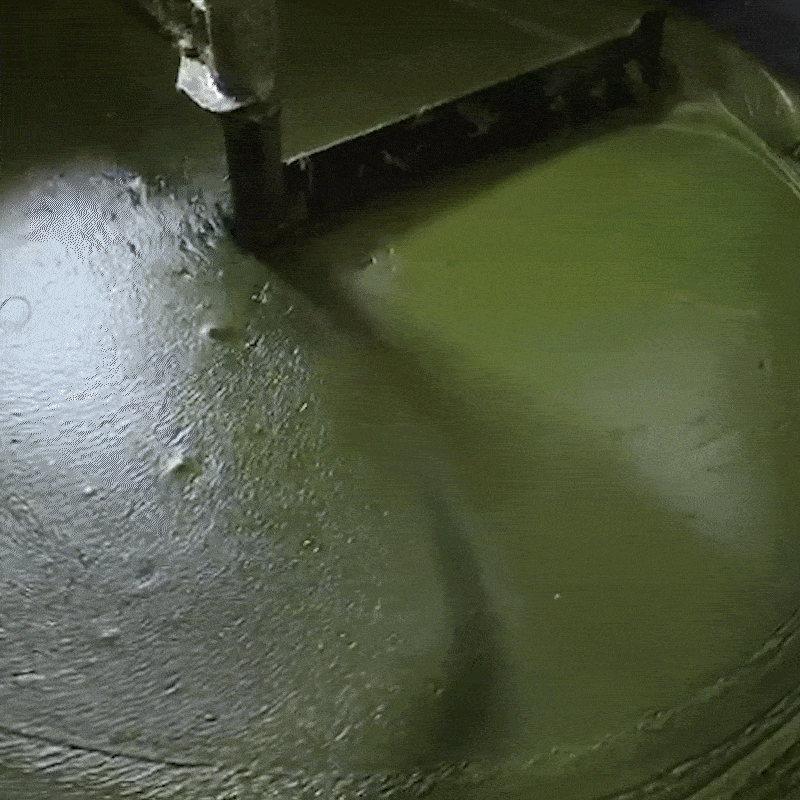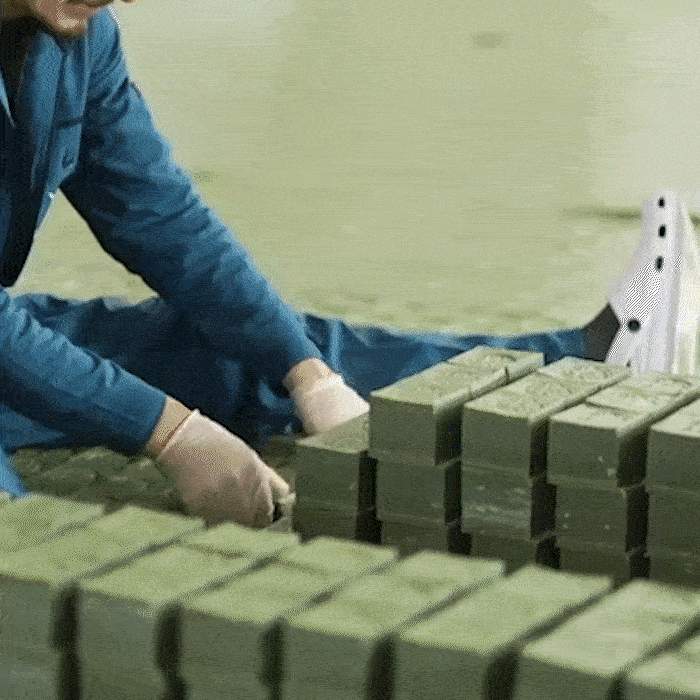Completely natural, it is free of synthetic fragrance and preservative. Its virtues for skin care are recognized throughout the world.

Cart
Your cart is empty


The first manufacturing step for saponification consists of heating water and sodium hydroxide in a huge cauldron to a certain temperature, then adding olive oil. We let the preparation heat for 12 hours and let it rest. One of our major assets is to heat the soap paste by steam distillation, which gives us better control of the temperature. If it is too high, the virtues of the oils are lost.
The next day, we heat and mix the contents of the cauldron, then add the bay berry oil (previously filtered). The ingredients are carefully combined to form the base of the soap, guaranteeing a natural and beneficial composition for the skin.

The resulting soap paste is then rinsed several times with salt water to remove all traces of caustic. The sodium chloride that you find in the composition of Aleppo soap comes from this step. The water is then removed from the cauldron and recycled. These steps are part of the saponification process: it is the natural chemical effect between the oils and the sodium hydroxide that transforms the oil into a soap molecule.
After rinsing, our soap makers meticulously spread the soap paste in a large basin. Each step is carried out with artisanal precision, measuring and smoothing the surface to ensure a traditional texture. This process prepares the Aleppo soap for solidification.

Once solidified, the soap paste is manually cut into blocks of soap by our artisans, using a traditional foot-operated tool.
Their shape may vary slightly because each cut is made by hand.
Each bar of soap thus obtained is then stamped with the seal of the Najel soap factory. This seal represents much more than a simple brand; it embodies our commitment to the authenticity and ancestral tradition of Aleppo soaps.
This underlines our pride in offering products that respect the ancestral know-how and quality standards that we have inherited for generations.

The soaps are then assembled into pyramids and placed in ventilated cellars away from the sun, for a natural drying of at least nine months. This process allows the soaps to develop their characteristic color and preserve their quality. Each block of soap loses approximately 30% of its weight in water during drying, ensuring a maximum concentration of benefits for the skin.
Once dry, the soaps are cleaned, carefully packaged and ready to be shipped to our Laboratory in France.